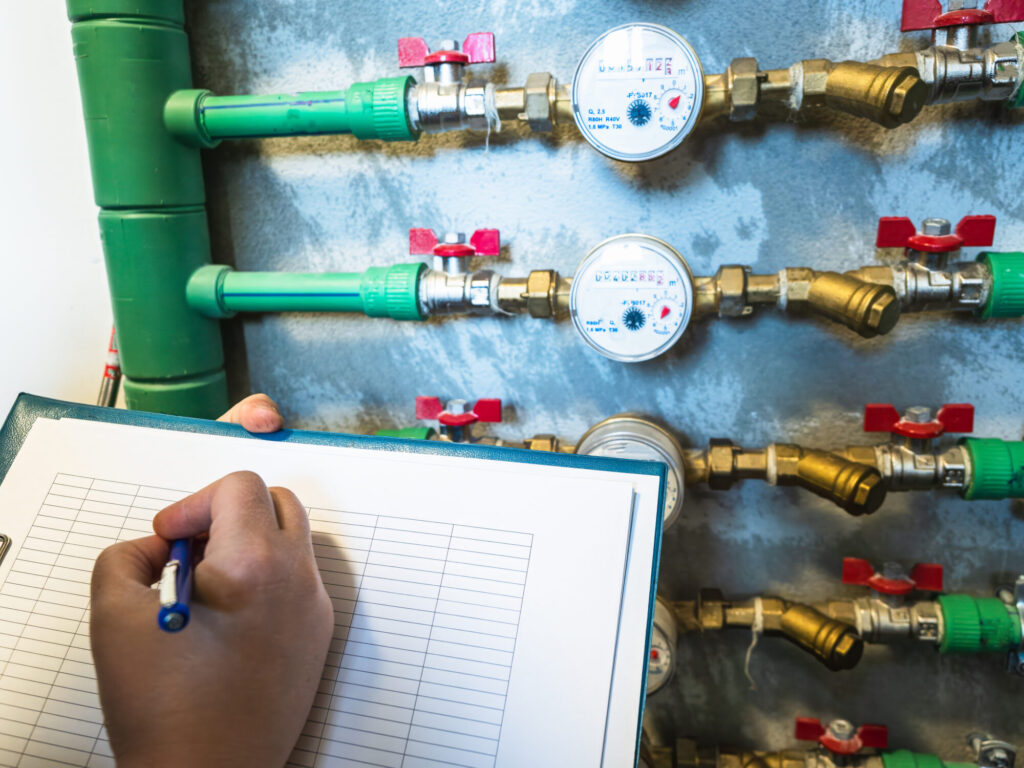
Backflow testing isn’t just a technical requirement—it’s a critical step in protecting your water supply. Whether you’re managing a large commercial property or maintaining your family home, ensuring the cleanliness and safety of your water system should be a top priority. Unfortunately, many homeowners and businesses aren’t fully aware of how often backflow testing should be conducted or why it’s so essential. Without proper testing, your clean water supply could be at risk of contamination, which can lead to harmful health and safety issues.
At Brock Mechanical, we aim to simplify plumbing complexities for our clients while ensuring water safety. This guide dives into the importance of backflow testing, how often it should be done, and the benefits it provides for both residential and commercial property owners like you. By understanding these details, you’ll be well prepared to maintain a safe and efficient water system.
Why Backflow Testing is Crucial
Backflow occurs when contaminated water reverses its flow, entering and polluting your clean water supply. This can happen due to a sudden change in water pressure caused by events such as a burst water main, a frozen pipe, or excessive demand on your system during peak hours. Imagine contaminants like fertilizers, chemicals, or waste being drawn into your water supply—backflow testing helps prevent these dangerous scenarios by ensuring your system’s protective mechanisms are working as they should.
Routine backflow testing is designed to identify potential risks within your plumbing system, ensuring valves and devices are functioning correctly before problems arise. Beyond being a health and safety measure, backflow testing also ensures that your property complies with local and state plumbing regulations. For businesses, these tests are often required on an annual basis to protect public health and avoid penalties for non-compliance. For homeowners, while regulations may vary, regular testing offers peace of mind that your family’s water is safe to drink and use.
How Often Should Backflow Testing Be Conducted?
The frequency of backflow testing depends on the type of property, the regulations in your area, and the nature of your water system. In most cases, testing is recommended once per year. Annual testing ensures that your backflow prevention devices are functioning properly and able to handle stress from changing water pressures throughout the year. This proactive approach can save you from expensive repairs or contamination issues in the future.
For commercial properties or buildings with large-scale water usage, stricter testing schedules may apply. Facilities such as restaurants, healthcare centers, and manufacturing plants are often required to conduct annual or even semi-annual tests to ensure they meet health codes. Regular testing keeps you proactive, compliant with any ordinances, and avoids potential fines or penalties. For homeowners, while annual testing might not always be legally required, it’s still a best practice to protect your household’s water quality.
To stay on top of compliance requirements or ensure your water system is functioning properly, it’s essential to connect with professionals who specialize in backflow testing. An experienced team can assess your system, address any issues, and provide the documentation you need for peace of mind.
Understanding Backflow Prevention Devices
Your property likely has a backflow prevention device installed if it’s required by local laws or regulations. These devices create a physical or mechanical barrier, which prevents contaminated water from entering your clean water system. However, even the most advanced devices require regular maintenance, testing, and occasional repairs to ensure they continue to perform effectively over time.
There are several common types of backflow prevention devices, each designed for different levels of risk:
- Pressure Vacuum Breakers (PVBs): These are commonly used in systems with low risks, such as irrigation systems, and are ideal for protecting against contaminants like fertilizers or pesticides.
- Double Check Valves (DCVs): Found in many commercial properties, these devices provide consistent protection from moderate backflow risks and are often used in situations where clean water is critical for safe operations.
- Reduced Pressure Zone Devices (RPZs): These offer the highest level of protection and are typically installed in facilities that handle hazardous materials, chemicals, or other high-risk operations.
During backflow testing, certified professionals will inspect these devices to evaluate their condition and ensure they’re functioning as intended. Problems like wear and tear, blockages, or pressure imbalances can compromise the effectiveness of the device, so identifying issues early is essential.
What Happens During a Backflow Test?
Understanding the steps involved in a backflow test can help you feel confident about the process. When you work with skilled technicians like the team at Brock Mechanical, you can expect a thorough and professional inspection. Here’s what typically happens:
- Device Inspection: The certified plumber begins by inspecting your backflow prevention device(s) for any signs of physical damage, wear, or corrosion. Even minor issues can impact performance, so this step is crucial.
- Pressure Testing: Technicians use specialized tools to measure the water pressure levels in your system. This ensures your backflow prevention device can handle fluctuations in pressure, preventing contaminated water from reversing into your supply.
- Device Cleaning and Repairs: If needed, the device may be cleaned to remove debris or repaired to restore optimal performance. Regular maintenance keeps your system running smoothly.
- Official Report Submission: After the inspection, businesses will receive detailed documentation confirming the device has passed testing. This report may be required by local authorities or health departments to demonstrate compliance with regulations.
By identifying and resolving potential problems during testing, you can prevent costly repairs or dangerous water contamination later.
At Brock Mechanical, we’re committed to helping you maintain a safe and efficient water system. Regular backflow testing isn’t just about meeting regulations—it’s about protecting your health, your property, and your peace of mind. Whether you’re running a business or maintaining your home, we’re here to make the process simple, effective, and stress-free. Reach out to us today to schedule your backflow test and ensure your water supply stays clean and safe!
Frequently Asked Questions About Backflow Testing
How do I know if I need a backflow prevention device?
If your property has a sprinkler system, irrigation system, or industrial machinery connected to the public water supply, you likely need a backflow prevention device. Local ordinances often require them, particularly for businesses, so it’s important to consult a professional to understand your property’s specific needs.
What are the consequences of skipping backflow testing?
Failing to conduct regular backflow testing could cause serious health hazards for you and others. Contaminated water could enter your supply, leading to illness and potential liability if contamination affects the health of others. Additionally, skipping required testing for a business could result in fines, fees, or regulatory penalties.
At Brock Mechanical, we provide expert plumbing services, including backflow testing, for homeowners and businesses. If you need professional support, don’t hesitate to contact us. We’re here to ensure your property and water remain safe and compliant.


